
Early Spring Waxwings
March 15th, 2009
I went down to Mud Lake yesterday afternoon and was delighted to find nature waking up all over the place. Crows carrying nest material, robins and cardinals singing, chipmunks out of their burrows, Red-Winged Blackbirds freshly arrived from migration, and last but not least, waxwings galore.

1680x1050 wallpaper
In a brushy area near the outside fence of Mud Lake, a mixed flock of Cedar Waxwings and Bohemian Waxwings, along with a few robins, had staked out some small trees with last year's buckthorn berries. They clustered in taller trees and sallied down by ones or twos to pick the berries. The above was one of the Bohemians.
Another view of him:

Bohemian Waxwings have been here all winter, but these were the first I chanced to see since spring of 2008. The arboretum is often a good place to find them (they like crabapples). They'll be on their way out now, heading back to their breeding grounds in the far north.
Here are a couple of the Cedars:
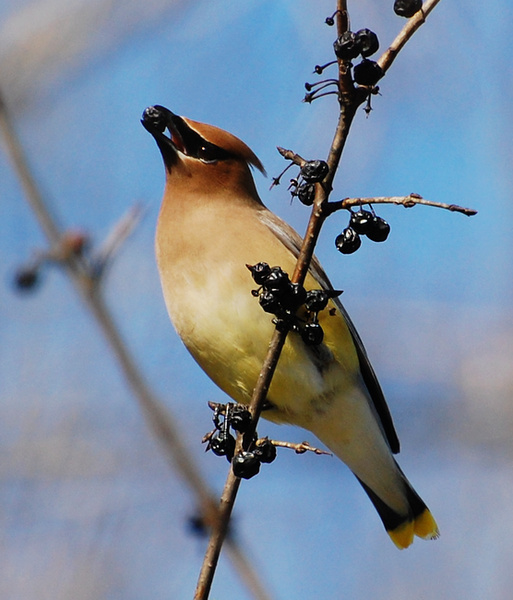
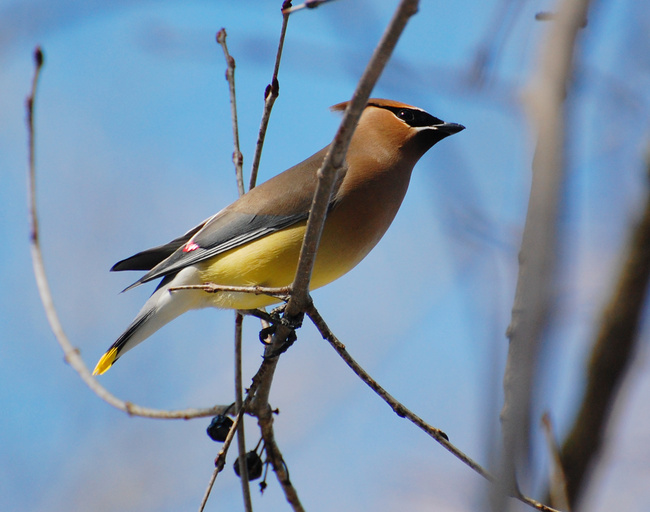
To me they're even more gorgeous. I love the warm gold of their bellies blending into brown. Fortunately for me, Cedar Waxwings are common breeders in our area!
Waxwings, collectively, are among the gentlest and gentlemanliest of birds. Their social structure is egalitarian. They never squabble. Naturalists have seen them line up on a branch and pass a berry from bird to bird. Each bird patiently passes it along, the last bird eats it, and then the ritual repeats until everyone is fed.
They are also jokingly known as the "party animals" of the avian world. In their eagerness to stuff themselves with berries in spring, they sometimes ingest fermented berries by mistake, and become quite drunk.
Spring migration begins
March 7th, 2009
Spring migration has begun!
The recent warm spell has successfully coaxed a few forerunners of the early-migrating species into Ottawa. In the Britannia Conservation Area today, numerous flyovers of 1-2 Canada Geese near the river, plus three of them standing at the edge of the rapids. In a scrubby field to the southeast was a twittering all-male group of Slate-Colored Juncos. Ring-Billed Gulls are back in force and have begun to colonize the Lincoln Fields parking lot.
Any day now Red-Winged Blackbirds will return. I can't wait.
White-Tailed Deer
March 5th, 2009
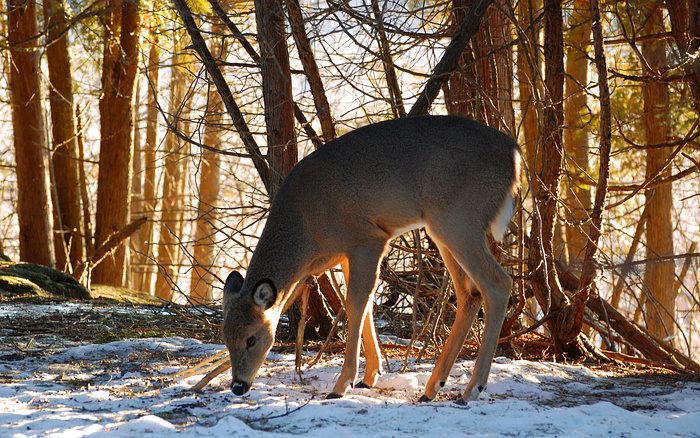
Photographed at Old Quarry Trail around sunset. This was one of last year's fawns.
Female Cardinal
February 14th, 2009
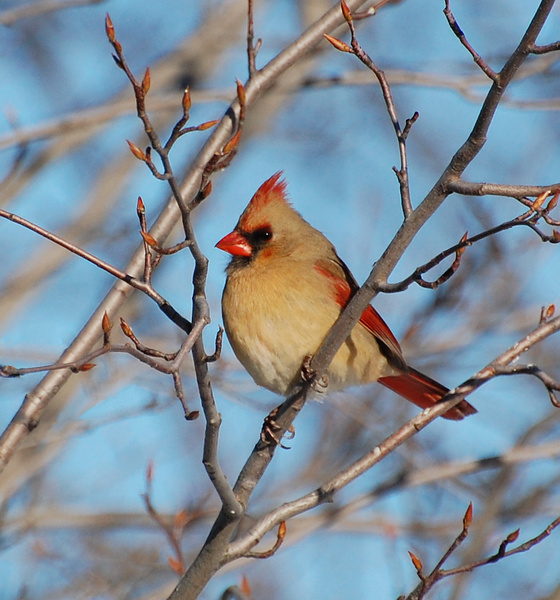
Something in the air
February 3rd, 2009

1680x1050 wallpaper
Three finches at Hurdman
February 2nd, 2009
At the Hurdman feeders this morning, three closely-related species of finches: one common, one a winter specialty, and one I'd never seen before.
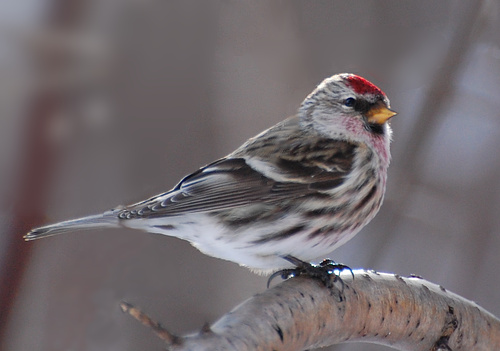
Among the winteriest of winter birds, Common Redpolls breed in the subarctic, and wander south only when food gets scarce. Some winters Ottawa is teeming with them; others, we scarcely see a one.
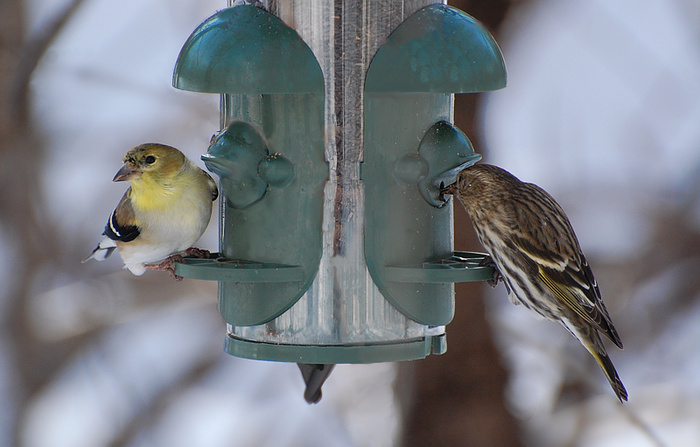
Left: American Goldfinch, Right: Pine Siskin
After several years and nearly two hundred species, new additions to my lifelist (especially in Ottawa, at my usual haunts) have become a rare occurrence. So it often takes me awhile to hoist it in when I get one, even when the identity should be clear as day. So it was with the Pine Siskin. "Hmm. A female House Finch with yellow bits? A redpoll without any red? A goldfinch...wait a minute."
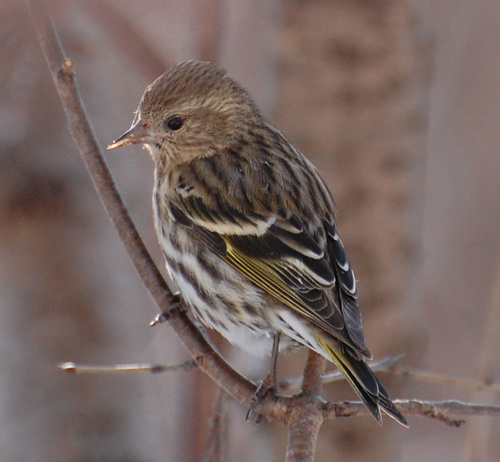
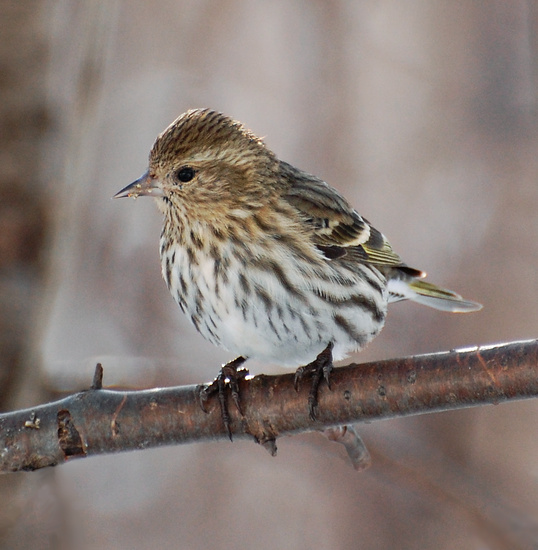
In the first picture above you can see one of the clinchers for Pine Siskin: the yellow markings in the wing. Another field mark, the very sharp, narrow beak (for a finch), shows well in the second photo. These, the goldfinches and the redpolls are all close relatives and often flock together at feeders.
A rare hawk at Riverain Park
February 1st, 2009
This fellow came and went almost before I knew what was going on.
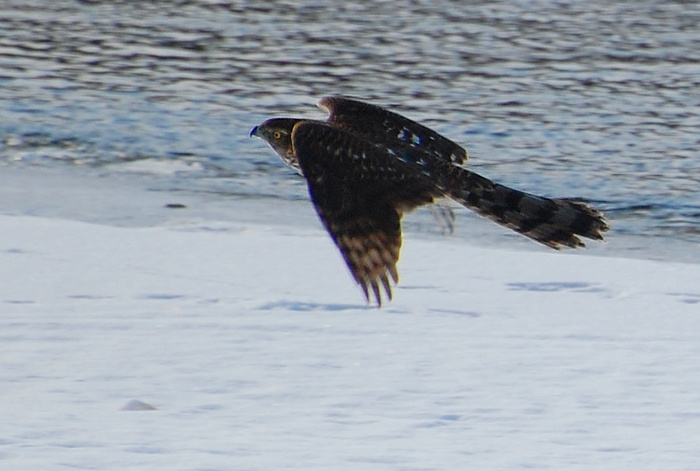
He's a juvenile Northern Goshawk, a large accipiter (bird-eating hawk) that is seldom seen in Ottawa. While his smaller relatives hunt songbirds, he goes in for grouse and waterfowl, plus the occasional medium-sized mammal. He whizzed by at Riverain Park and swooped low over the river, trying for one of the ducks (who promptly dove underwater to escape.) Needless to say this took me by surprise, and I only managed the one shot before he flew out of sight.
Trivia o' the day, courtesy of All About Birds: Attila the Hun wore an image of a Northern Goshawk on his helmet.
Answer: very carefully
January 27th, 2009
Responsible birding is often a balancing act, especially when dealing with rare or sensitive species. Wild Turkeys are one such. On the one hand, I want to keep my distance. I don't want to overstress these birds who have only recently been reintroduced to Ottawa and are struggling to survive our winters. On the other hand...Wild Turkeys! I live in a semi-urban apartment and there are freakin' Wild Turkeys practically in my back yard! How can a fanatic bird-watcher stay cool at a time like that?
I was watching "the gang of three" on Sunday, slowly creeping down the path towards them, camera in hand, trying to get them accustomed to my presence. Then a man with a golden retriever approached in the other direction. The feeding stopped, and all three heads bolted upright. They were stuck. Nowhere to run (turkeys prefer to run rather than fly whenever possible), thick brush and deep snow to either side, a man and a large dog on one end, and me with my suspiciously pointy-shooty thing on the other.
I knew they'd be able to get out of it, but I didn't like putting them under that kind of stress. So I walked back down the path and stepped off into the snow, avoiding the temptation to photograph them as they ran past.
Anyway, it all worked out. They ended up feeling so threatened by the dog that they flushed and went up into a tree. I put the sun behind me and got an excellent unobstructed view of one of them.

1680x1050 wallpaper
(The question, in case you didn't guess, is "how does a bird that big land in a tree without breaking the limbs off?")
Persona non grata
January 25th, 2009
Chickadees, goldfinches, starlings and woodpeckers were all having a blast at the Hurdman feeders today. Then all the activity stopped all of a sudden. The goldfinches disappeared and the chickadees began a non-stop chorus of "chick-a-dee-dee-dee-dee-dee-dee-dee!" Which, in chickadee speak, means "oh sh*t."
Shortly thereafter I spotted a Sharp-Shinned Hawk, a voracious eater of small songbirds, perched right above the feeder.
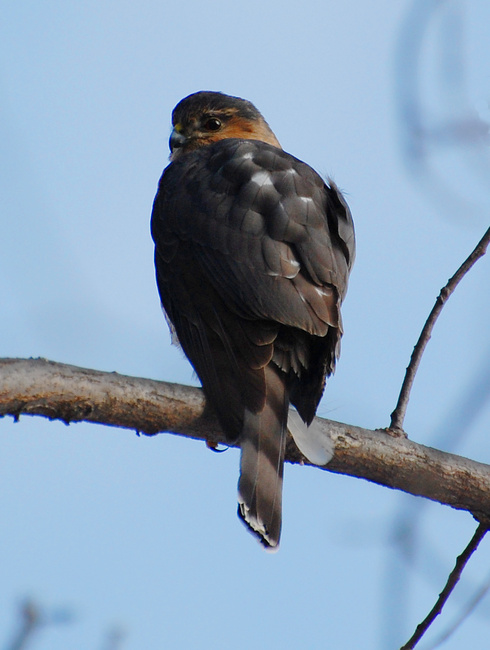
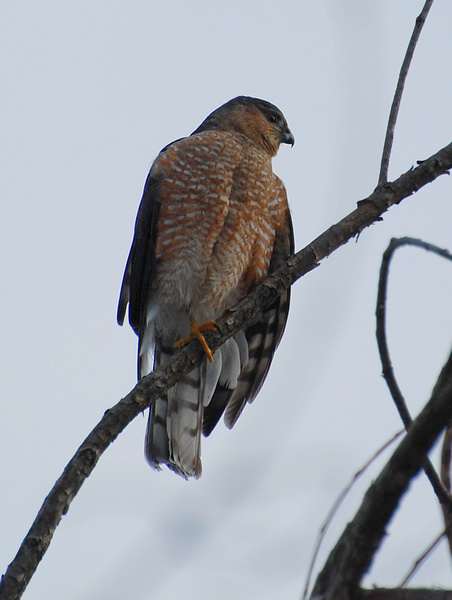
Wild Turkeys At Hurdman
January 24th, 2009
A "gang of three" (as the OFNC dubbed them) Wild Turkeys continue to frequent a bird feeder near Hurdman transit station.

|
